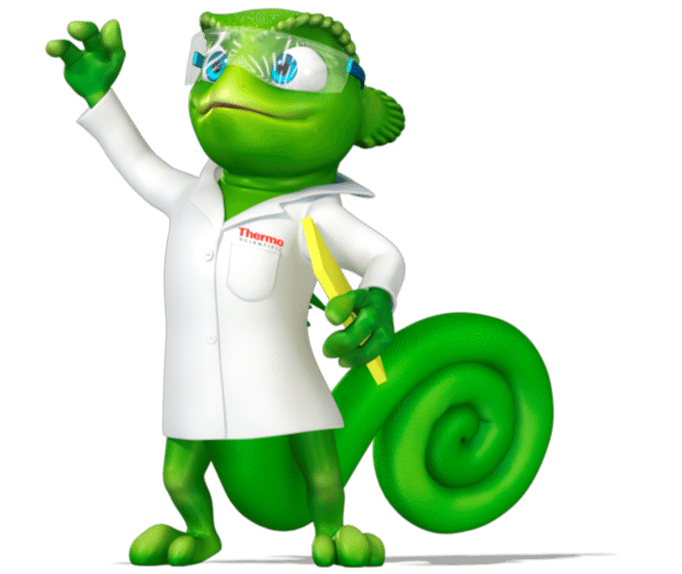This is the second part of our discussion with Dr Jeffrey Rohrer, Director of Applications for ion chromatography (IC) products at Thermo Fisher Scientific for his thoughts on the evolving role of IC in regulated pharmaceutical analysis...
 Are columns used in ion chromatography systems evolving?
Are columns used in ion chromatography systems evolving?
One of our initiatives even before the Integrion, but more now with the Integrion, is to have more of our own columns available in 4 µm size. While that doesn’t seem small for the HPLC world, where we’re looking at sub 2 µm particles, for making a polymeric phase that’s a significant step forward. We want to make these smaller, and hopefully in the future we will, but now we’re at 4 µm and if we want to do eluent generation we’re limited by the 5000 PSI limit – we want to change that as well in the future. So that’s where we’re heading just like the rest of the industry in HPLC, GC where everything needs to be shorter, quicker, get our data faster and we have the software that’s designed to do that – with Chromeleon.
Is the increase in the numbers of ion chromatography methods in the USP-NF globally applicable?
The USP is the leading pharmacopoeia in the world – I don’t know that I get a lot of debate on that. USP methods are legal in over 50 countries, that means the whole book is legal just like it is in the US. That said, there are other pharmacopoeias – the European Pharmacopoeia, the British Pharmacopoeia, the Japanese Pharmacopoeia, the Chinese Pharmacopoeia – many of them look to the USP for methods but more importantly the pharmacopoeia’s a harmonization effort so if there’s a method in the EP that might be better or different they may be adopted to the USP and vice versa. So the USP has a lot of weight here but the other pharmacopoeias are moving in the same direction – for more chromatography, more automation, to get things done with better, more direct data – we’ve seen in the crisis of heparin, the crisis of glycerol that there are times when indirect assays are not sufficient and lead, in those cases, to death or lead to fraudulent drugs, so more direct methods, better methods is the goal of all the pharmacopoeias out there.
What does the future of ion chromatography and pharmaceutical analysis hold? For pharmaceutical analysis and ion chromatography I think we’re looking at similarities to what happened with HPLC – we’re going to get faster, in some manner we’re going to get faster – we’re already a lot faster than we were 5 years ago. We’re going to get faster so we can get more data. I would think we’ll keep improving the software, so there’s less intervention once you set-up something it’ll give you exactly what you want, integrate better. You know, we’ve already improved integration over the years. I think that’s where we’re going. In general, I think we’re also going to be using the same kind or approaches to improve resolution – the smaller particle size – so when people are doing a variety of organic acids one of the things people do is to screen for counterions. That’s where with resolution, if you have a lot of counterions you could apply the same method. I see, like everything else, it’s getting faster — the data generating the reports so you can do a quick, fast analysis.
For pharmaceutical analysis and ion chromatography I think we’re looking at similarities to what happened with HPLC – we’re going to get faster, in some manner we’re going to get faster – we’re already a lot faster than we were 5 years ago. We’re going to get faster so we can get more data. I would think we’ll keep improving the software, so there’s less intervention once you set-up something it’ll give you exactly what you want, integrate better. You know, we’ve already improved integration over the years. I think that’s where we’re going. In general, I think we’re also going to be using the same kind or approaches to improve resolution – the smaller particle size – so when people are doing a variety of organic acids one of the things people do is to screen for counterions. That’s where with resolution, if you have a lot of counterions you could apply the same method. I see, like everything else, it’s getting faster — the data generating the reports so you can do a quick, fast analysis.
What’s the value of choosing Thermo Fisher Scientific as a partner for ion chromatography?
If you need to run standard gradients, if you need to do fast analysis, if you need to look at a small peak in the presence of a large peak, we have the column capacity to do that, our systems are well suited to run those. We’ve also developed a full application library, so unless you know you’re only ever going to do the one thing, and you’re looking for the most versatile system to be able to do anything, change it up, whatever, we have the system to do that. We have suppression for both cations and anions, electrochemical detection, gradients, both standard and electrochemical, electrolytic gradients for eluent generation, a variety of detectors – a UV detector, a mass spec – we’re all set up to do that with all our products.
What motivates you?
I like keeping records – for our business what we do is we document methods. I hate when we do some work and it either doesn’t work so we can’t document it or that somebody leaves and it’s difficult to document. I like getting things documented – so, in our case it’s application notes, it’s papers, it might be a presentation and that’s been the central theme. I just like getting things done – I like being able to check a box and say I did something. That’s what really motivates me and I think we’ve been really successful in my group and we’ve have a lot of good people work for me and be successful over the years.
 Dr Jeffrey Rohrer joined Thermo Fisher Scientific as part of Dionex 28 years ago. He’s worked as an applications chemist and R&D chemist, and about 20 years ago he began managing applications labs in ion chromatography, HPLC, and extraction to produce application documents. Currently he is Director of Applications development for Dionex products, comprising ion chromatography and part of IC called HPAE-PAD.
Dr Jeffrey Rohrer joined Thermo Fisher Scientific as part of Dionex 28 years ago. He’s worked as an applications chemist and R&D chemist, and about 20 years ago he began managing applications labs in ion chromatography, HPLC, and extraction to produce application documents. Currently he is Director of Applications development for Dionex products, comprising ion chromatography and part of IC called HPAE-PAD.




